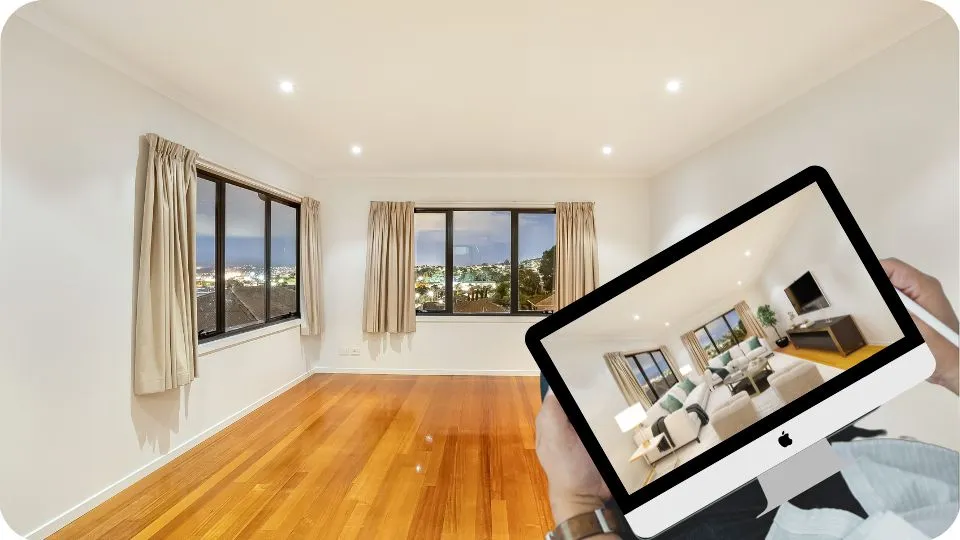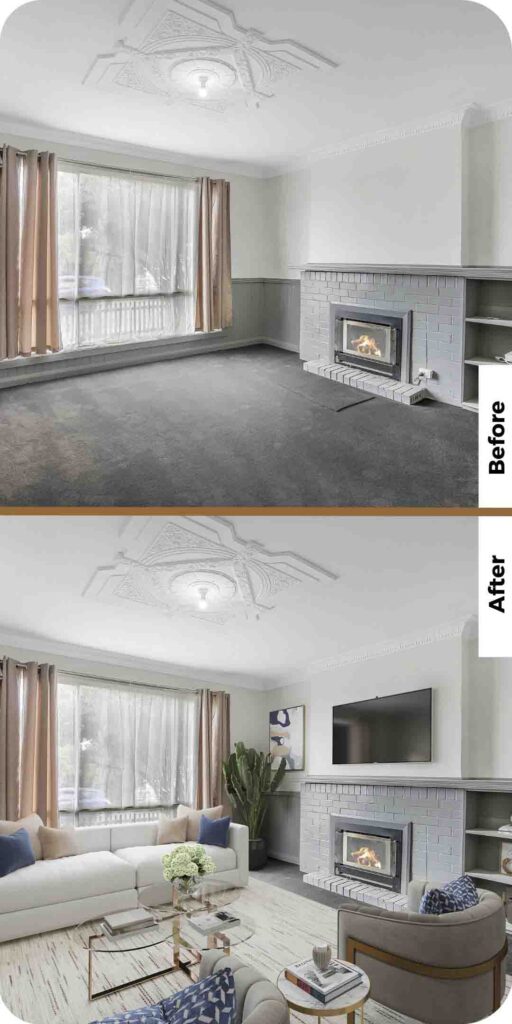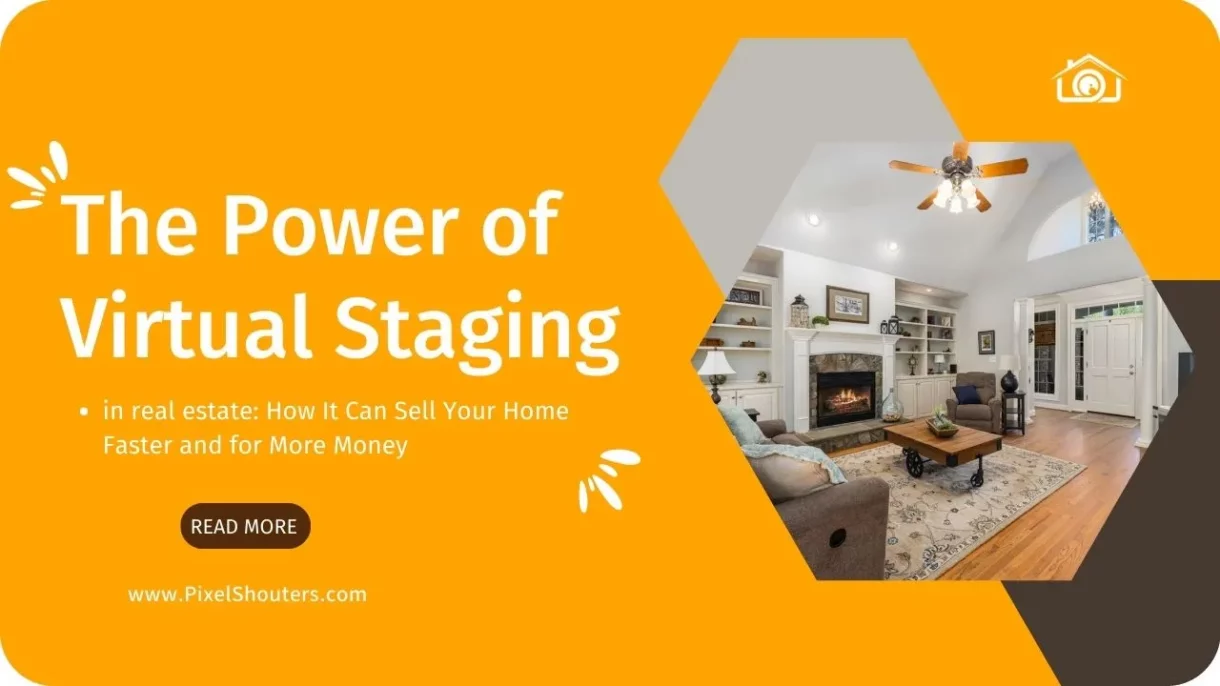The Power of Virtual Staging in Real Estate: How It Can Sell Your Home Faster and for More Money
Virtual staging is a powerful tool that can help homeowners and real estate agents sell properties faster and for more money. It involves using technology to create digital images of a property that can be used to showcase its potential to potential buyers. Unlike traditional staging, virtual staging in real Estate is a cost-effective and flexible solution that can be customized to meet the needs of any property. In this article, we’ll explore the benefits of virtual staging in real estate, how it impacts buyer behavior and decision-making, and provide best practices for using this tool effectively.
Table of Contents
Understanding Virtual Staging
Virtual staging involves using 3D modeling and rendering software to create realistic images of a property. These images can be used to showcase the potential of a property and help buyers visualize themselves living in it. Virtual staging is cost-effective, flexible, and customizable, making it an ideal solution for properties of any size or style.
Unlike traditional staging, which involves physically moving furniture and accessories into a property, virtual staging allows real estate agents to showcase a property’s potential without the need for expensive furniture rentals or staging fees. Virtual staging can also be customized to meet the needs of any property, with options for different furniture styles, color schemes, and accessories.

The Benefits of Virtual Staging in real estate
Virtual staging in real estate offers a number of benefits for homeowners and real estate agents. One of the key benefits is the ability to create emotional connections with a property. By showcasing a property’s potential through virtual staging, buyers can see themselves living in the space and imagine what it would be like to call it home. This emotional connection can ultimately lead to a faster sale, as buyers are more likely to make an offer on a property they feel connected to.
Virtual staging in real estate can also help overcome common buyer objections. For example, if a property is currently vacant, virtual staging can be used to show buyers how the space can be used and help them imagine what it would be like to live in the property. Virtual staging can also be used to showcase the potential of a property that may be in need of renovations or updates, helping buyers see past any current flaws and focus on the property’s potential.
The Science Behind Buyer Behavior
To understand the impact of virtual staging on buyer behavior and decision-making, it’s important to first explore the psychology of buyer behavior. Buyers make decisions based on a combination of rational and emotional factors, with emotions playing a significant role in the decision-making process. Visual cues are also an important factor, as they can influence buyer perceptions and emotions.
Virtual Staging and the Buyer’s Decision-Making Process

Virtual staging can impact buyer behavior and decision-making by creating emotional connections with property and helping buyers visualize themselves living in the space. By showcasing a property’s potential through virtual staging, buyers are more likely to see themselves living in the space and feel an emotional connection to the property. This emotional connection can ultimately lead to a faster sale, as buyers are more likely to make an offer on a property they feel connected to.
Virtual staging can also help buyers visualize the potential of a property, especially if the property is currently vacant or in need of renovations. By showing buyers how the space can be used and highlighting the potential of the property, virtual staging can help buyers see past any current flaws and focus on the property’s potential.
Best Practices for Virtual Staging
To use virtual staging effectively, it’s important to follow best practices and choose a reputable virtual staging provider. Here are some tips for using virtual staging effectively:
- Choose high-quality images and styles that accurately represent the property
- Work with a reputable virtual staging provider who can provide realistic and customizable images
- Choose a Virtual staging provider who can provide a variety of furniture styles and accessories
- Customize the virtual staging to meet the specific needs of the property, such as showcasing certain features or rooms
- Consider the target market and choose a virtual staging style that will appeal to them
- Avoid over-staging or using unrealistic images that may mislead buyers
- Use virtual staging in conjunction with traditional staging to create a cohesive and comprehensive marketing strategy
- Update virtual staging images as needed to reflect changes or updates to the property.
Virtual Staging and Buyer Demographics:
Virtual staging can be a powerful tool in attracting and appealing to different buyer demographics. By tailoring virtual staging images and styles to specific groups, sellers can improve the effectiveness of their marketing efforts and increase the chances of a successful sale. Here are some key points to consider when using virtual staging to target different buyer demographics:
Millennials:
- Millennials are a tech-savvy generation that values convenience and experiences.
- Virtual staging that showcases modern and minimalist designs, with smart home technology and eco-friendly features, may appeal to millennial buyers.
- Using virtual staging to depict an open and flexible floor plan can also appeal to millennials who value multi-functional spaces.
Families:
- Families often prioritize space, safety, and practicality when looking for a new home.
- Virtual staging that shows a home’s potential for storage, child-friendly areas, and proximity to schools and parks can appeal to families.
- Depicting comfortable living areas, such as a cozy family room or a spacious backyard, can also attract family buyers.
Retirees:
- Retirees often prioritize ease of living, accessibility, and amenities when choosing a new home.
- Virtual staging that showcases a home’s single-level living potential, low-maintenance features, and nearby community centers can appeal to retirees.
- Using virtual staging to depict a peaceful and relaxing environment, such as a garden or waterfront view, can also attract retiree buyers.

Investors:
Investors often prioritize the potential return on investment when considering a property purchase .Virtual staging that shows a home’s potential for rental income, such as highlighting a separate entrance or multiple living areas, can appeal to investors. Depicting a home’s proximity to popular rental areas or major transportation hubs can also attract investor buyers.
When using virtual staging to target different buyer demographics, it’s important to keep in mind that the virtual staging should accurately represent the property’s features and potential. Avoid using virtual staging that is too specific or limiting, as it may not appeal to all buyers. By taking the time to understand the needs and preferences of different buyer demographics, and using virtual staging to showcase a property’s full potential, sellers can increase the chances of attracting the right buyer and achieving a successful sale.
Conclusion
Virtual staging in real estate is a powerful tool that can help sell properties faster and for more money. By creating emotional connections with property and showcasing its potential, virtual staging in real estate can influence buyer behavior and decision-making. To use virtual staging in real estate effectively, it’s important to follow best practices and choose a reputable virtual staging provider. When used in conjunction with traditional staging, virtual staging can create a cohesive and comprehensive marketing strategy that showcases a property’s full potential.
